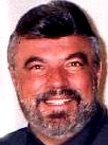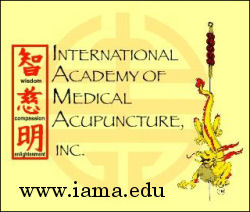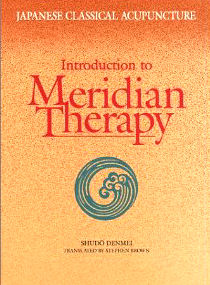Acupuncture & TCM Articles

Acupuncture Articles
by John A. Amaro L.Ac., Dipl.Ac.(NCCAOM), DC
 Dr. Amaro is an internationally known author, lecturer and practitioner beginning his practice of Acupuncture and Chiropractic in 1971. He has led 13 diplomatic Acupuncture study tours of The People's Republic of China escorting more than 500 doctors and practitioners. He has personally studied Acupuncture in nine separate Asian nations. Dr. Amaro is an internationally known author, lecturer and practitioner beginning his practice of Acupuncture and Chiropractic in 1971. He has led 13 diplomatic Acupuncture study tours of The People's Republic of China escorting more than 500 doctors and practitioners. He has personally studied Acupuncture in nine separate Asian nations.
He has received Certification in Acupuncture through the Columbia Institute of Chiropractic in 1973. This was one of the first Acupuncture postgraduate education programs for physicians in North America commencing in 1972.
He has been certified by the Waseda Acupuncture College in Tokyo, Japan in 1974 and graduated from the Chinese Medical Institute, Kowloon, China in 1976. He had previously taken postgraduate studies at the Tai Chung Medical School Taipei, China 1973.
Acupuncture or Meridian Therapy:
Are they the Same?
John A. Amaro L.Ac., Dipl.Ac.(NCCAOM), DC
The word acupuncture (from the Latin acus [needle] and punctio [puncture] has been a part of language for at least 600 years. The first Europeans to describe acupuncture were Jesuit missionaries, silk merchants, and mariners.
Acupuncture came to America with the Chinese immigrants who migrated to build the ever-expanding railway system. While acupuncture for the most part stayed within the Chinese community, historians have suggested that acupuncture was used on infrequent occasions on early settlers in life threatening or grave situations.
In Europe the art of acupuncture had been practiced in a variety of forms and had become an accepted and respected folk art by the mid 1800s. In the Mid East, acupuncture was well known and in common use.
D.D. Palmer's historic 1910 book The Art and Science of Chiropractic, better known as The Chiropractic Adjustor, devotes a full page to "Queer notions of the Chinese" in which the term acupuncture is named. The word acupuncture would not surface again with popularity in the United States until President Richard Nixon's delegation to China in 1972 when the press reported on its use.
Numerous early chiropractic and osteopathic techniques were taken specifically from the techniques of acupuncture. However, their description was described as manual technique with no mention or credit given to the ancient principles of Chinese acupuncture.
Introduction to Meridian Therapy
 
Today 23 states allow the use of acupuncture by chiropractic physicians, either through scope of practice, or by special certification. Several states have ignored the acupuncture issue by not taking a stance. In the remaining states, even though acupuncture may not be allowed to be practiced through the historic use of needles, "meridian therapy" is commonplace and accepted.
So what is the difference between acupuncture and meridian therapy? In actuality, there is none. It must be understood that just like chiropractic, acupuncture is a principle not a technique.
Classically and according to state law, acupuncture generally speaking is the administration of needles to a specific body location for the relief of pain or the balancing of body energies. The definition of acupuncture also includes (for those only practicing acupuncture and not licensed as another healing art) mechanical, electrical, thermal and manual stimulation of a specific area of the skin.
As chiropractic physicians practice their usual and customary treatment, many of the techniques we apply have their origin ingrained in ancient Chinese principles. Hence, ultrasound is a prime example of the stimulation of a grouping of specific acupoints which is classically known as "surround the dragon." In the technique known as surround or circle the dragon, one simply applies stimulation to those points on or around a painful body part. By taking a quartz crystal and vibrating it at a high rate of speed, it becomes one of the most notable stimulation devices for the treatment of an acupoint ever devised.
Electrical stimulation has been a vital part of the chiropractic physicians armamentarium for as long as its invention. Electrical stimulation to skin points and areas has proved its merit and is an accepted fact of life within the scientific community.
Since our scope of practice, with very few exceptions, allows for heat, light, water, sound, electricity etc., it no longer becomes a matter of if we can apply meridian therapy, the matter is where, when, how, and why.
It is the principle of acupuncture which is important not necessarily how that principle is delivered. Even noting the fact that needle stimulation has an incredible rate of response and classically it is how most people perceive the use of acupuncture, all of the aforementioned techniques are not only accepted internationally but also historically.
If given a choice of what technique is to be employed I think it is safe to assume the vast majority of patients would eagerly choose a noninvasive approach.
Remember, acupuncture is a principle not a technique, and there is no difference between meridian therapy and acupuncture outside of the mode of stimulation. The principle remains the same.
We are on the threshold of an unprecedented growth in alternative healing especially now that the first of the "baby boomers" turn 50 next year. It behooves you to understand acupuncture/meridian therapy and to apply it in your practice. To not understand this most vital healing art is to ignore one of the most popular methods of health to be seen in the 21st Century.
Nearly every state allows for physical therapeutics to be used outside of adjusting of the spine. In essence nearly every state allows for noninvasive acupuncture. Acupuncture and meridian therapy are exactly the same thing in philosophy, principle and academia, the only difference is technique.
| 